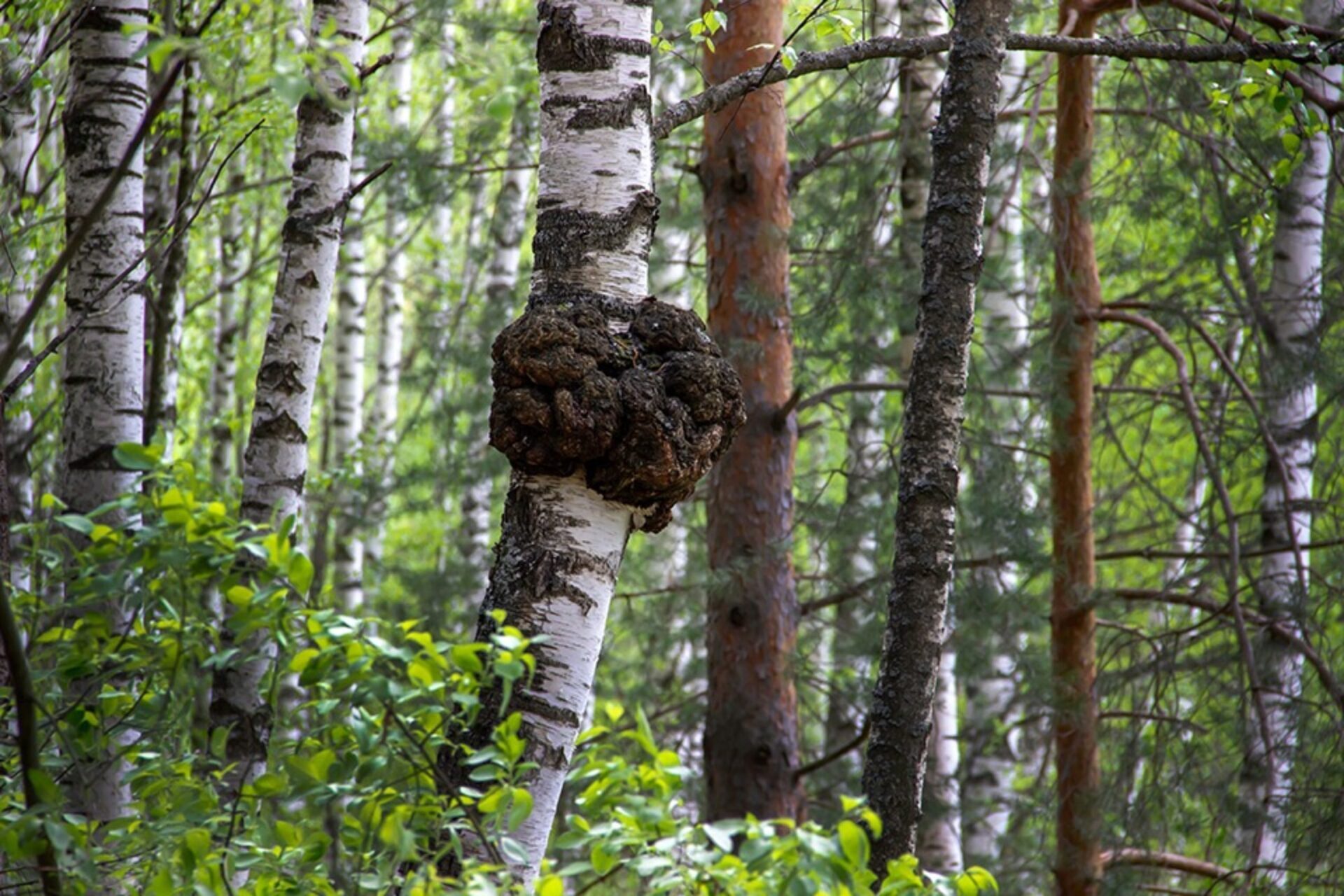
Mushrooms are all the rage. Even a casual scroll through our Instagram feeds brings turkey tail, reishi, cordyceps, lion’s mane mushrooms marching by, flaunting their gills and finery, as proud young foragers beam with their “superfood” finds. Their interest — and today’s “superfood” movement — is far from new: in 2013, and every year since, mushrooms have been declared the “superfood of the year,” backed by centuries’ worth of folk wisdom and medicine.
Chaga’s Historical Uses
Chaga has been used for health and medicinal purposes for hundreds, possibly thousands of years, with some research pointing back to the Mesopotamian era. More recent history (12th century and forward) traces extensive use in Russia, the Baltics, China and Korea, as well as use in ceremo-nies and as medicine by First Nation peoples in North America.
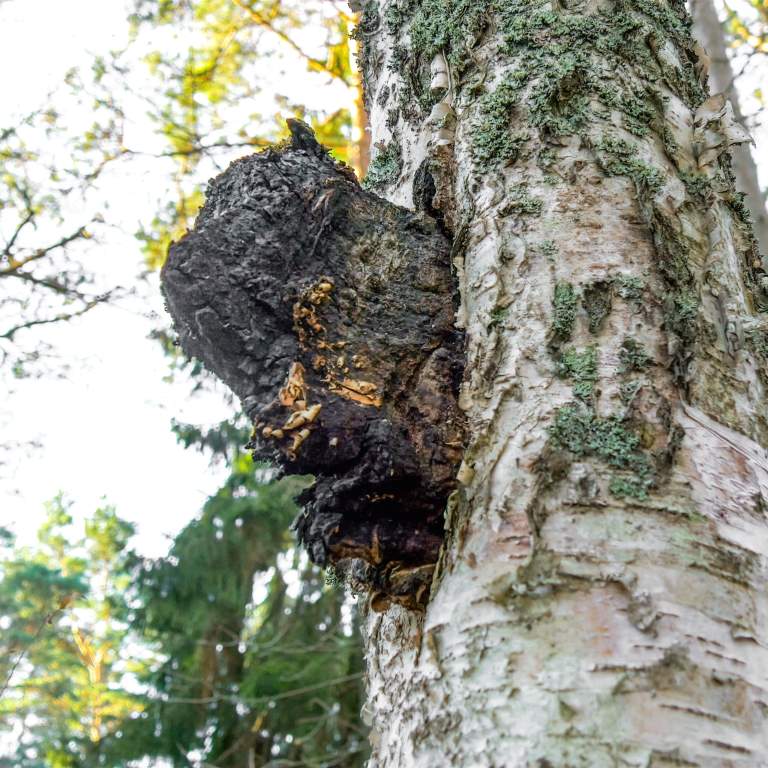
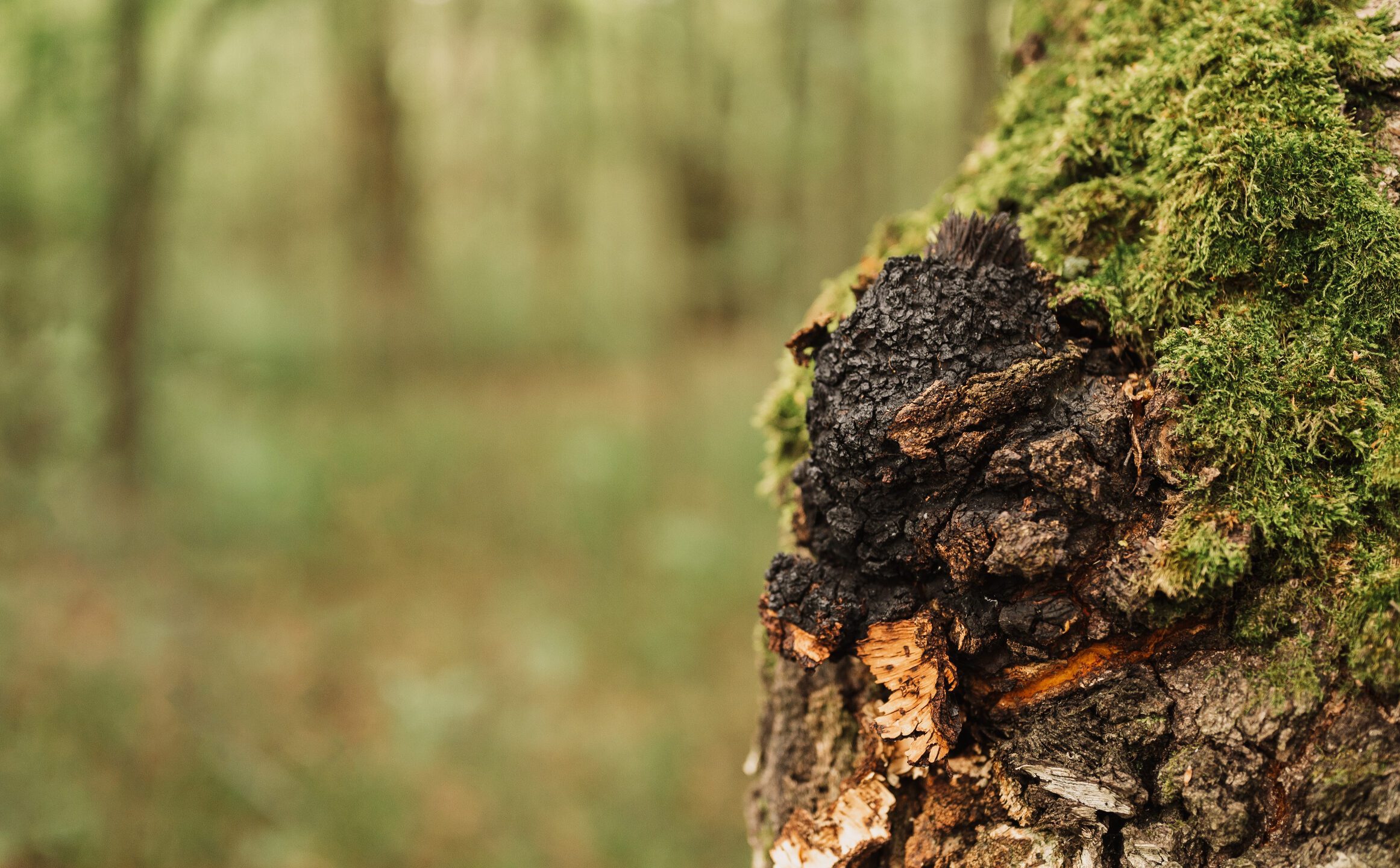
Each culture used chaga in a different way and to treat different ailments, addressing a breathtaking range of health problems:
- In China, chaga was used primarily as a health and vitality tonic, to boost immunity.
- In Baltic states, chaga was used to promote heart, liver and stomach, cellular health.
- Chipewyan and Ojibway Nations used chaga to support immune health.
- The Gitskan people of British Columbia used it to treat occasional joint pain and toothaches.
- In Siberia and Russia, chaga was used to boost stamina, immune health, stomach and skin health.
That’s a pretty impressive lineup of uses through the ages. Chaga might have been lost to our world’s modernization, save for Russian writer Aleksandr Solzhenitsyn who recalled Russia’s history with the fungus in his semi autobiographical novel The Cancer Ward. The main character is a political prisoner (see also: semi-autobiographical) and when he’s released from prison camp, he uses it to support immune health, while wishing he could have a “peasant’s cure” instead:
“He could not imagine any greater joy than to go away into the woods for months on end, to
break off this chaga, crumble it, boil it up on a campfire, drink it and get well like an animal.”
What are the benefits of Chaga?
Chaga is indubitably a gold-star superfood, and research supports its antioxidant properties without question. (Chaga has three times the antioxidants of açai!) And there are a handful of in vitro studies that have shown chaga’s ability to support cellular health in the body. (Even the famed Memorial Sloan-Kettering Cancer Center
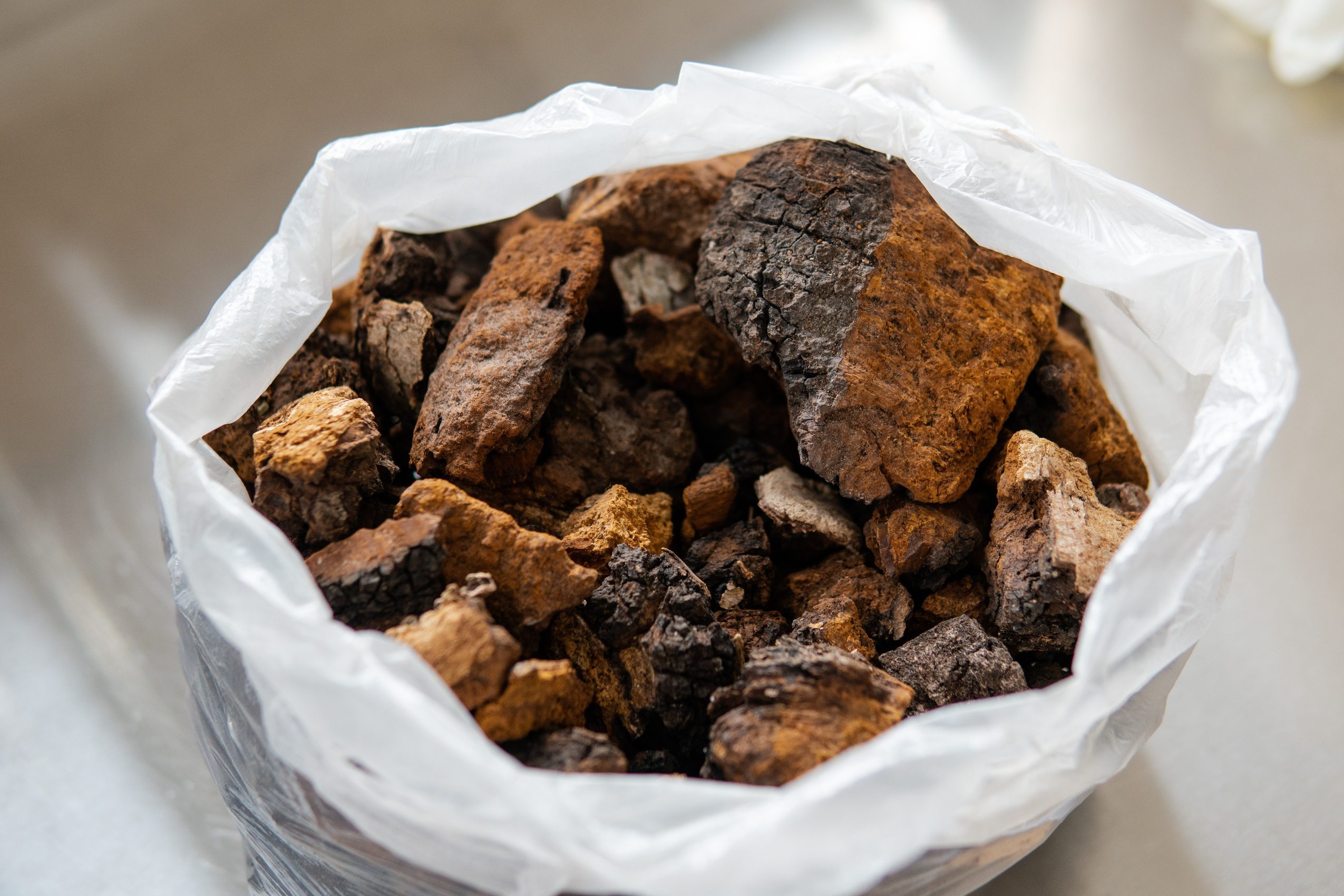
acknowledges these studies have merit.) But more testing needs to be done in vivo (on humans) before those claims can be supported.
Fortunately, there is already sufficient research on many of chaga’s superpowers. It is an antioxidant and has the ability to support a normal inflammatory response. It can help support our immune system in times of stress because it supports the formation of beneficial cytokines, which regulate the immune system. Its high melanin content and antioxidant qualities can help support healthy aging aging and promote healthy skin.
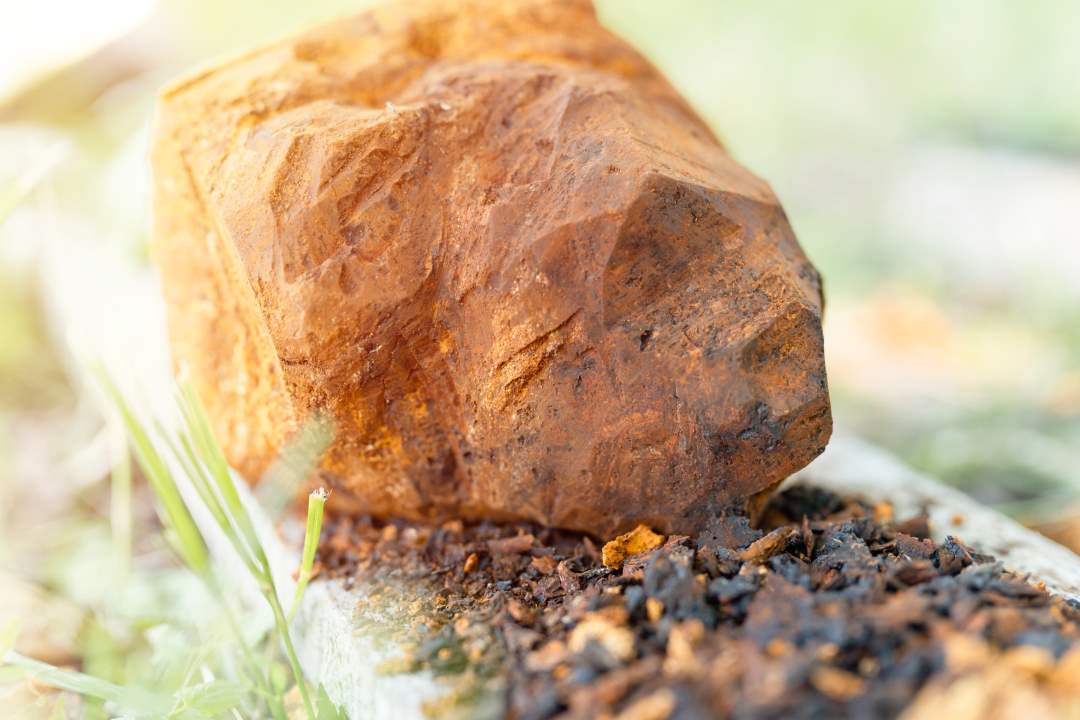
And since chaga is hosted on birch trees — literally feeding off of the tree and absorbing its nutrients — it also contains high levels of betulin and betulinic acid, which is a miracle natural product in its own right.
It’s important to note that wild chaga, as opposed to lab-grown chaga, is likely to contain significantly more betulin and many other positive chemical compounds that come from the birch tree. As a parasite, chaga feeds on the birch tree, attacking it from its core, and those nutrients then are pulled into the conk as it extrudes from the birch trunk. This process takes 10 to 20 years, and yes, it kills the tree.
And no, chaga is not a mushroom.
Why Isn’t Chaga a Mushroom?
Possessing so many benefits, chaga is an adaptogen, a nootropic, an herbaceutical. But what Inonotus obliquus is not is a mushroom. This is because mushrooms, botanically speaking, are the fruiting bodies of mycelium, the fibrous vegetative network of filaments that helps digest decaying matter to feed the fruiting bodies, which are the sexual organs of mushrooms.
By contrast, chaga is a mycelium that transforms itself into a polypore by feeding on its birch tree for 10 to 20 years and slowly decaying it from the inside. In its final years, the fruiting body forms between the trunk and the bark, dissolving as the tree dies and releasing its spores to the greedy bugs and birds that will then deliver it to its next birch tree to start again.
This cycle is why chaga is considered by many fans of fungi a superhero fungus: it extracts the vitality and nutrients that the tree has been storing and creates a super-concentrated mass with super powers.
Okay, Gimme Chaga. But How?
Traditionally, chaga is grated and brewed into a tea. That is definitely a popular way to get the most benefits possible, but it results in a fibrous drink. (Extra fiber is a good thing, though, yes?) Frequently, too, chaga is ground into a powder, and you can find it in many mushroom coffee products. (Be sure you know whether you’re buying mushroom powder with actual coffee, or just a mushroom powder, if caffeine isn’t your thing.) Camera-ready “chagaccinos” are making appearances, with cinnamon and ginger grated in to sweeten up the earthy flavor of chaga. And of course, you will see chaga in capsule form, as a functional beverage or powdered supplement to be added to smoothies, and also as tinctures.
Pay attention to whether the chaga is sustainably sourced and from where: Northern climates are where it proliferates. If you choose to buy farmed, just be aware that the chaga benefits may be lessened, as it is difficult to match the intensity of 20 years’ of parasitic growth on a birch tree.
And last but not least, if you decide to try to find and harvest chaga in the wild, be careful not to kill the tree by removing the entire conk. Instead, cut away one-third to half of the chaga and leave the rest to support the chaga’s continued growth — and the birch tree’s continued sacrifice of its nutrients and vitality to its parasite, so that we all may benefit.



